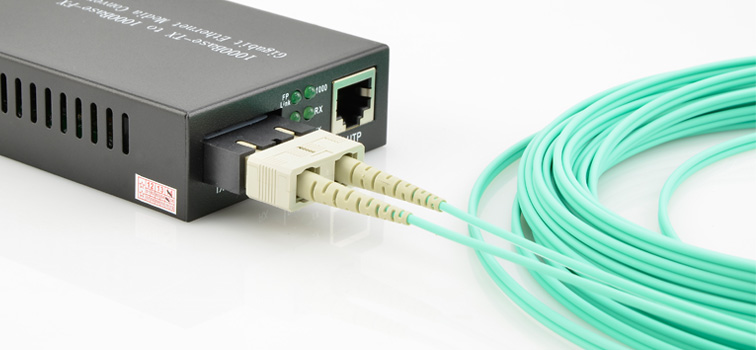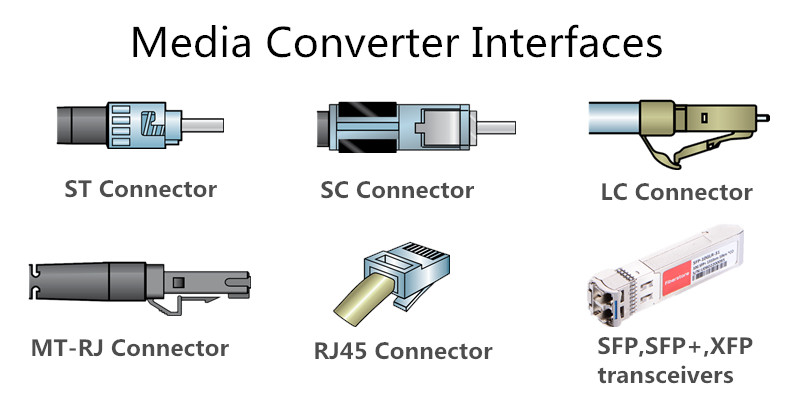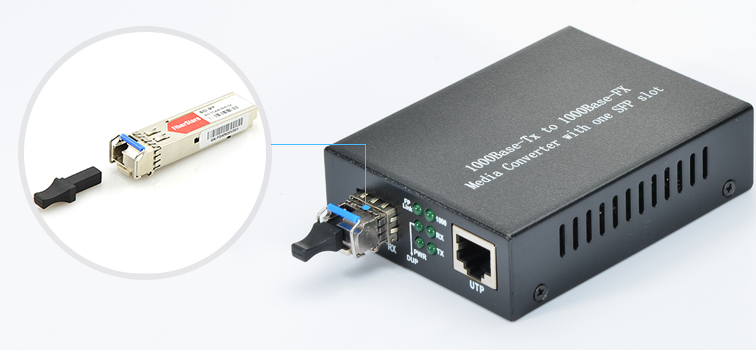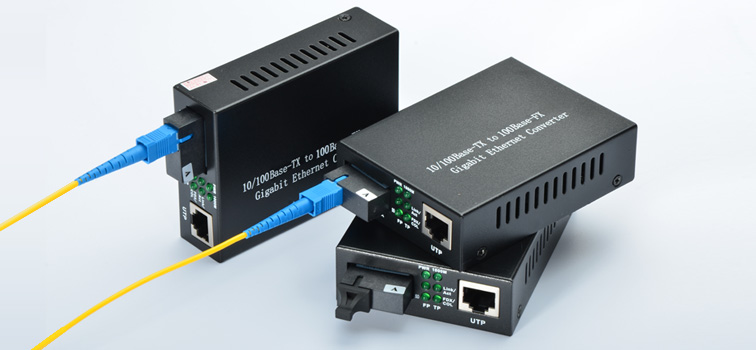How to Connect Fiber Media Converter to Network
by Alice G. Fiber opticFiber media converter is a device which can connect two types of medias, like copper to fiber optic and single-mode fiber to multimode fiber. As a cost-effective device that can connect two dissimilar cable media, it has been widely used in today’s network, especially FTTH systems. Although fiber media converters come into various types according to the parameters like data rate, interfaces, form factors, power options and Simple Network Management Protocol (SNMP), the purposes to use fiber media converters in networks are usually simple. They are often used in pairs to extend a network over fiber by inserting a fiber segment into a copper network, or be used individually to accomplish the conversion between two different cable types. This post will introduce the connection guide of fiber media converters.

Before connecting fiber media converters, the interface of them should be firstly acknowledged. The following picture shows the most commonly used connectors that a fiber media converters may use. The ST connector is designed for fiber using a bayonet locking system. SC connector and LC connector are the most popular small-form-factor fiber connectors. The MT-RJ connector is a RJ-style connector which has a molded body. The RJ45 is the familiar to most people, which is designed for copper cable and can be found on most of our devices that need to be connected to the Ethernet. The above mentioned interfaces of the fiber media converters can be connected to the target devices directly by patch cords. However, for SFP, SFP+ and XFP transceivers, there are two methods for connecting the media converters to the network. The connection methods will be introduced in the following.

There is one of the most important things about fiber media converters, which is they are often used in pairs. The two fiber media converters should be connected to each other for single transmission and conversion.

The above picture shows an application example of fiber media converters. For fiber media converters with fiber optic interface of LC/ST/SC/MT-RJ, the interfaces on the two media converters can be connected directly by a length of fiber optic patch cable that has the corresponding connector type. The RJ45 port of each media converter is connected to 10/100Base-TX HUB and computer server separately. The two fiber media converters should be supported by electricity.

For fiber media converter that has a SFP/SFP+ or XFP transceiver interface. The connection between the two media converters is a little bit different from the others. Two optical transceivers are needed. Additional optical transceiver should be inserted to the port firstly and then the two media converter should be connected via ports of the two optical transceivers. If the port support 10G and the transmission distance between the two converters is less than 100 meters, then a length of SFP+ to SFP+ AOC can be used.

The above mentioned fiber media converters connections are just the most basic methods. As there are a variety of media converters and their functions are different from each other. Connecting the fiber media converters largely depends on the practical using. Kindly visit FS.COM or contact sales@fs.com for more details. Our professional sales and technical support are willing to solve your problems about media converters.
Sponsor Ads
Created on Dec 31st 1969 18:00. Viewed 0 times.




helo the Artical was awoseme
Oct 18th 2022 07:58